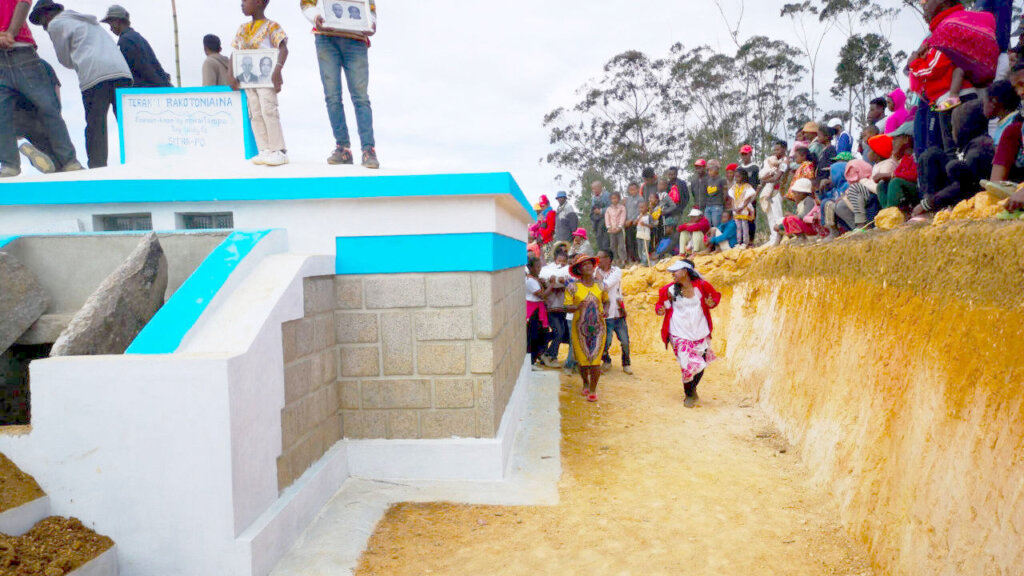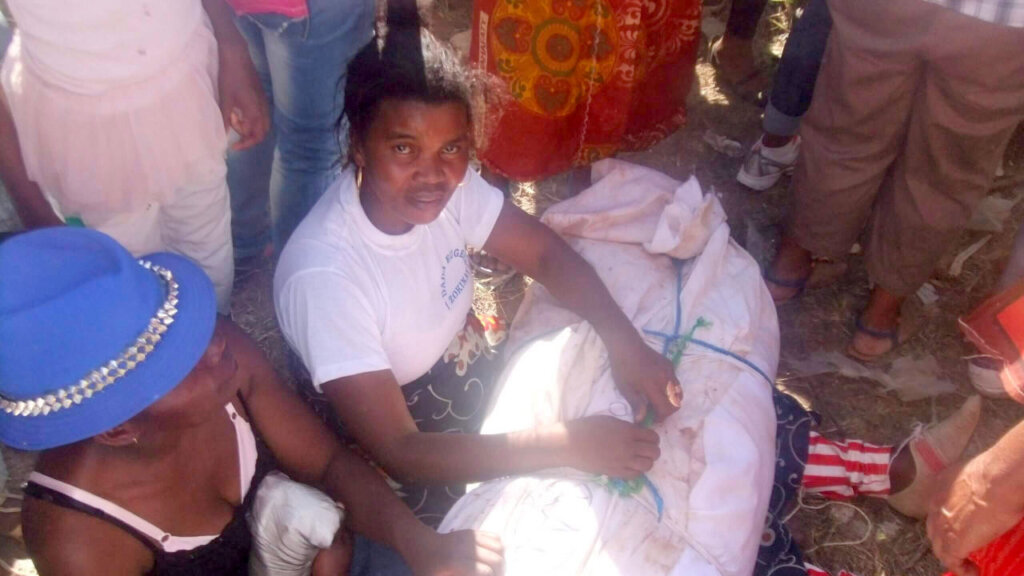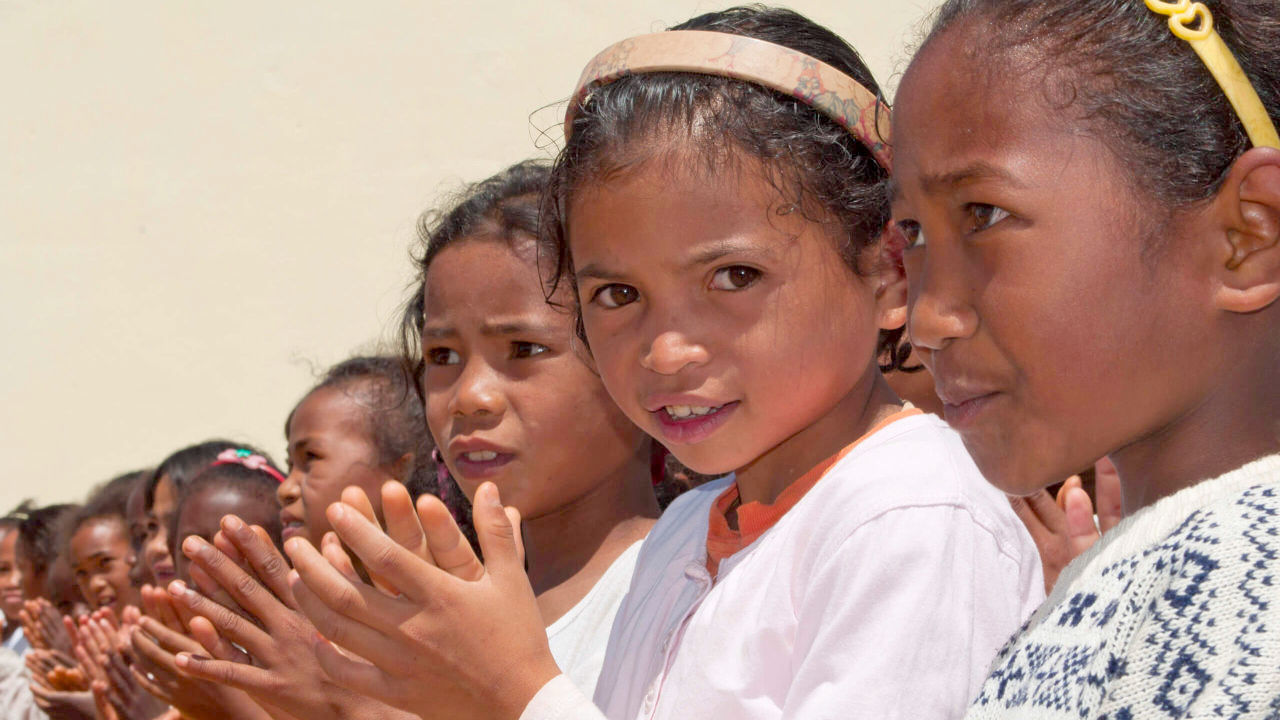
The Highlanders of Madagascar bury their dead not once but twice. Firstly, they use individual graves for the corpse. But at least two years later, Malagasy exhume their dead and rebury them, this time in a family tomb. It is during this second time that the Famadihana, takes place!
In this post we explore the details and purpose of this fascinating custom. Additionally, we explore the remnants of a pirate cemetery and discuss the legendary Libertalia.
The word Famadihana comes from the verb ‘vadika’, meaning to turn. Additionally, this relates to the silk sheets (‘lamba mena’) that Malagasy use to wrap the dead. Therefore, Famadihana roughly translates to the turning of the bones. Moreover, it has both elements of a ritual and a memorial celebration.
Famadihana is a relatively new custom only taking place in this form only for the last couple a centuries. Finally, people often also call it, dancing with the dead! But what does actually occur during this turning of the bones?
The death ritual usually takes place during dry winters in the Malagasy highlands. The whole village can gather and celebrate Famadihana together. Sometimes they would have to walk dozens miles on foot to reach the graves of their loved ones. The Malagasy then wrap their dead relatives in white special sheets. After that, they head back to the village while carrying the corpses above the heads.
Upon arrival to the village or another designated celebratory location, villagers take care of the dead by using additional silk sheets.
The living then spend time with the dead. Additionally, a feast starts after the dead have been properly cleaned. During this celebration the living eat, play music and dance, often with the dead! The Malagasy believe that the dead enjoy this celebration as much as the living. Moreover, the Famadihana is the perfect opportunity for the living to honor the dead and ask for their blessing.
The festivities of Famadihana can last for two days. This in combination with the silk sheets make this a very expensive affair for the family. After the celebration is over, the turning of the bones ritual is over. When Malagasy rebury the dead, they add offerings such as food, alcohol and money. These aim to keep the deceased comfortable in the afterlife. The dead then rest in peace until they are reunited with their families during the next Famadihana.

According to some, this second burial is the final stage of the deceased’s separation from our world. Also, it marks the beginning of their complete membership at the society of the dead. Because of that, the soul of the deceased may then fully reunite with their ancestors. Other researchers support that the purpose of the ceremony actually is to separate the dead and the living. In addition to that, they support that that the focus of this celebration lies on the living. That is so because death is perceived as a social and not an individual affair.
Furthermore, the turning of the bones works also as a great occasion for a family reunion. That includes not only the dead but also family members that live in faraway regions. Additionally, new members of the family such as newborns and sons and daughters in law are introduced during the Famadihana. In this respect, it is also an event that celebrates kinship.
After all, one’s ancestors play a crucial part in Malagasy culture since they may provide blessings to their family. For example, women that have difficulties conceiving a baby may cut and safe-keep a small piece of the fabrics of the dead. This way they are trying to to receive the deceased’s blessing and good fortune.

Just like the body is not immediately buried in its final resting place, the soul also has a journey to fulfill.
Specifically, the Malagasy believe that the soul cannot fully transition to the afterlife directly after death. Instead, the spirit of the recently deceased will be wandering around in our plain. Moreover, souls mostly visit places that they held meaning to them while they were alive. During this period, the soul is considered to be on a afterlife probation, so to speak. This probation ends with Famadihana and only then the soul gets to fully cross over.
In conclusion, the turning of the bones is significant both for the living and the dead. At the same time it is important as well for the body and the soul of the deceased.
During the early conversion period of locals by Christian Evangelicals the custom was frowned upon. Because of that it started taking placing less often. However, nowadays the Catholic Church sees it only as a cultural custom and not as a religious death rite. Due to that, i does not pose any objections.
In modern times, the number of families opting for this practice is declining. The reason for that could possibly be the high expenses of the feast in combination with buying the silk wrapping sheets. Another potential reason could be the media claims that the Famadihana may has links to the transmission of the plague in the highlands.
However, many Malagasy families still chose to dance with their dead honoring death and celebrating life!

Libertalia is a pirate colony that may or may not have existed! Although, the pirate founder of the colony was, supposedly, Captain Mission, historians disagree about its actual existence. In theory, this society knew only freedom for all and was against all forms of governance. Therefore, historians described Libertalia as utopian state, existing only on paper!
How is a mythical pirate colony related to Madagascar though?
One of the possible locations of Libertalia was actually the Île Sainte-Marie off the eastern of Madagascar! St. Mary’s Island, which is its English name, was a confirmed pirate base during the 16th and 17th centuries. Furthermore, many of the famous pirates of the time resided in area, not far from Ambodifotatra, the island’s main village. These pirates actually started families on the island. Because of that, the pirates made their own cemetery! Specifically, many human remains have been found in tombs at this pirate cemetery, but not all are identified. Regardless of whether this was Libertalia or not, the cemetery exists to this day!
We hope you learned something new regarding this country’s death practices!
Finally, if you want learn more to similar death customs and practices, have a look at our Day of the Dead Mexico article. For more on second funerals check out our Ghana and Nigeria articles!
The average mixed death rate in Madagascar is 6,055 per 1.000 people (2018).
Malagasy bury their dead soon after death. In case that a second burial takes place such as with Famadihana, this could occur months or years later.
Around 85% of Malagasy are Christian although very often this does not stop them from performing traditional spiritual practices. Officially, only around 4,5% of people in Madagascar practice folk religions.
Organ donations can be challenging in Madagascar according to reports from the World Health Organization (WHO). No data of donor registration and organ transplantation on a National level could be found.